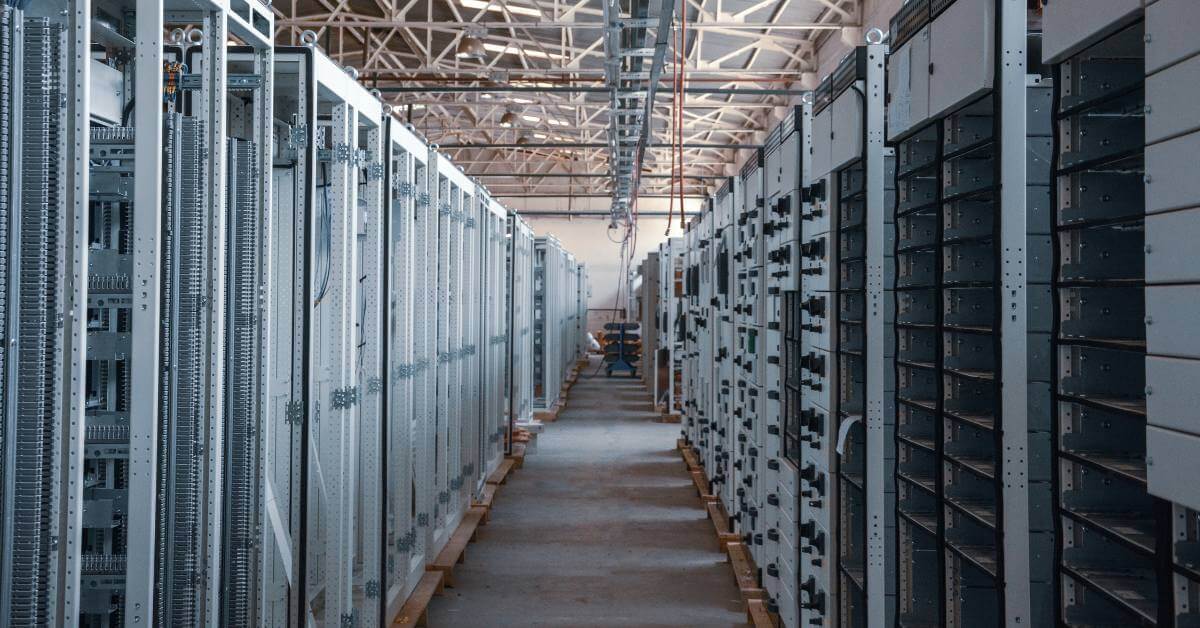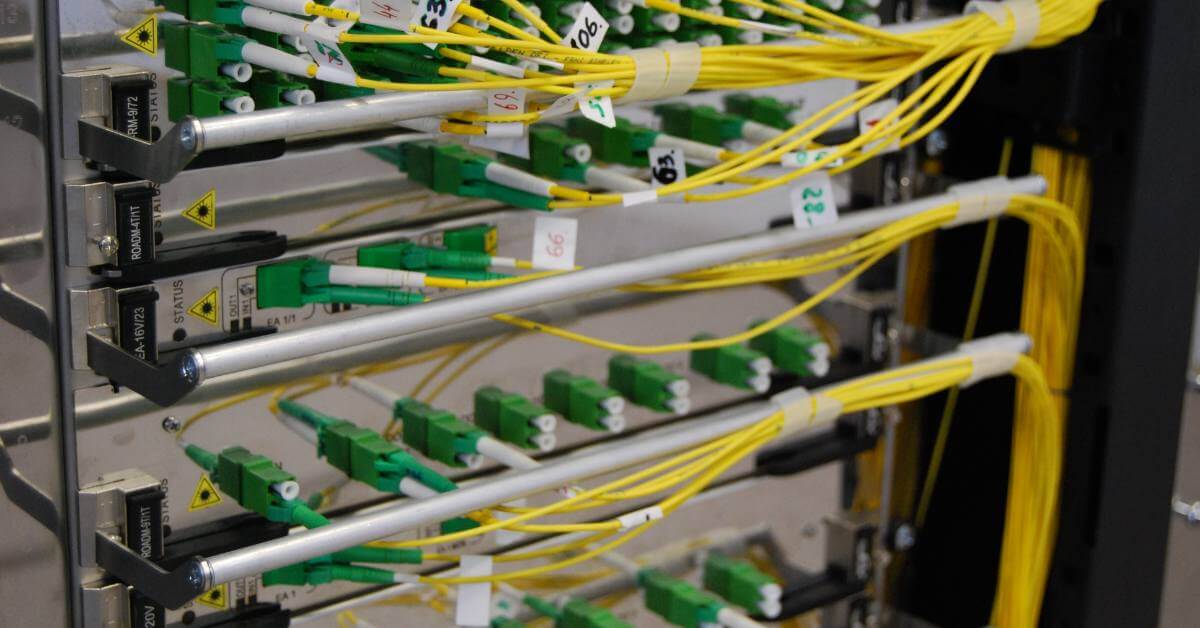Accurate, real-time data can differentiate between success and failure. No matter your business's industry or niche, you need access to accurate, real-time data to make informed decisions for today and your future.
Data unlocks behavior and buying patterns, analytics, market predictions, and more crucial to your success as a business leader. But all this data has to exist somewhere, safe and secure until you need it.
For most companies (especially tech-driven ones), the solution to safe data storage is either a cloud-based or on-premises datacenter. Which is better for your business–both its current and future goals?
Understanding the differences between cloud vs. on-premises services, the advantages and disadvantages of each, and some key things to consider when you weigh your options can help you choose the right data storage solution for your business.
Cloud vs. On-Premises Datacenter: Key Differences
What is a cloud datacenter?
A cloud datacenter is a virtualized infrastructure that provides internet-based computing resources and services. Cloud datacenters offer a range of deployment models, including public, private, and hybrid clouds.
Prominent third-party providers like Amazon Web Services (AWS), Microsoft Azure, and Google Cloud Platform own and manage public clouds. Private clouds, on the other hand, are dedicated to a single organization. The third deployment model, hybrid clouds, combines elements of both public and private clouds to meet the specific business requirements of its customers.
While cloud datacenters offer many advantages, two in particular—scalability and flex pricing— allow organizations to scale within budgets and as needed. On-demand provisioning and virtualization capabilities help businesses quickly adapt to changing requirements and ensure optimal resource utilization and cost efficiency.
And the popular pay-as-you-go pricing model means you only pay for the resources you consume. This reduces upfront investment costs and provides greater financial flexibility, especially for startups or businesses with fluctuating resource needs.
Related read: Getting Cloud Security Right With Azure
What is an on-premises datacenter?
An on-premise datacenter is a physical infrastructure maintained on company property by the company operating it. It includes servers, storage devices, networking equipment, power supplies, and cooling systems. Unlike cloud datacenters that leverage virtualization and shared resources, on-premises datacenters offer dedicated hardware and resources for a single company.
On-premises datacenters offer complete infrastructure control because you can customize and tailor the environment according to specific governance and compliance requirements. They also allow operations to protect sensitive data better since on-premises centers are on-site. This control over physical access is particularly beneficial for industries with stringent regulatory requirements or businesses handling highly sensitive information like HIPAA data.
5 Cloud vs. On-Premises Datacenter Considerations
1. Accessibility
Cloud datacenters provide remote access to resources from anywhere with an internet connection. This flexibility enables teams to work collaboratively and access data and applications seamlessly. However, on-premises datacenters may bring accessibility limitations (particularly regarding remote access). If you think an on-premises datacenter is your company’s desired route, ensure secure, reliable internet connectivity to enable remote access to on-premises resources.
2. Availability
You'll likely turn to cloud datacenters if you need high availability and robust infrastructure redundancy. Cloud employs redundant infrastructure, failover mechanisms, and distributed datacenters to maintain. These fail-safes increase cloud availability by minimizing single points of failure. On-premises datacenters may have single points of failure.
3. Cost
Cloud datacenters typically operate on an operational expense (OpEx) model where businesses pay for their resources. This pay-as-you-go pricing makes cloud services more economical, particularly if your organization has variable resource demands or an irregular budget.
On-premises datacenters require upfront investment and ongoing maintenance costs. This is a turn-off for smaller companies or those with limited resources. However, you can often get on-premises datacenters up and running more efficiently with the right budget.
4. Flexibility and Scalability
The cloud’s strengths are flexibility and scalability. The cloud lets you scale your resources on-demand, leveraging virtualization, resource provisioning, and automation capabilities.
On-premises datacenters may have limitations in scaling resources due to hardware constraints. Scaling can become a months-long construction project unless you have to build more space to store all the equipment. However, you can often accommodate growth with additional investments.
5. Security
Cloud service providers invest heavily in securing your infrastructure and ensuring data privacy. The cloud supports these efforts by offering robust security measures, data protection mechanisms, and compliance frameworks. However, the cloud is separate from your physical space, potentially leading to lags in identifying or solving security issues when they arise. On-premises datacenters provide control and customization options thanks to their on-site advantages.
Cloud vs. On-Premises: Choosing the Best Option for Your Business
An infrastructure plan is crucial for tech-driven companies’ scalability, flexibility, cost management, data security and compliance, disaster recovery, and overall innovation. Understanding your desired infrastructure's key differences, advantages, and considerations helps you make informed choices with your needs, budget, and long-term goals.
Whether it's the scalability and flexibility of the cloud or the control and customization of an on-premises datacenter, each option has its own merits. Or, a hybrid (cloud and on-prem) approach might be your best choice. In all situations, the right integrator can aid your team in establishing the infrastructure plan that will best support your overall business and growth goals.
At Redapt, our end-to-end technology services help you navigate the complexities of today’s technology and confidently make decisions. Contact us to learn more about our cloud adoption services and other offers.
Categories
- Cloud Migration and Adoption
- Enterprise IT and Infrastructure
- Artificial Intelligence and Machine Learning
- Data Management and Analytics
- DevOps and Automation
- Cybersecurity and Compliance
- Application Modernization and Optimization
- Featured
- Managed Services & Cloud Cost Optimization
- News
- Workplace Modernization
- Tech We Like
- AWS
- Social Good News
- Cost Optimization
- Hybrid Cloud Strategy
- NVIDIA
- Application Development
- GPU






